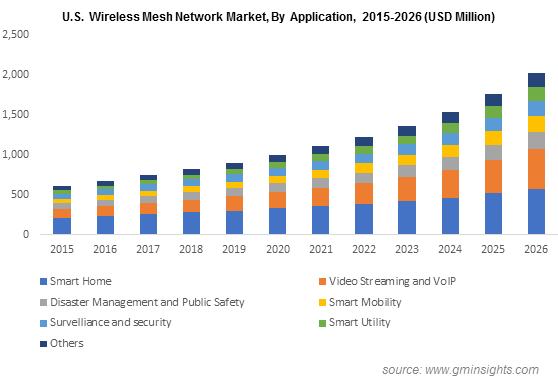Significant Rise In DWP Home Visits: Concerns For Benefit System

Table of Contents
Reasons Behind the Increased DWP Home Visits
The surge in DWP home visits stems from a confluence of factors, primarily focused on improving the integrity of the benefit system and ensuring accurate distribution of government benefits.
Fraud Prevention Efforts
The government has intensified its efforts to combat benefit fraud, which costs taxpayers millions of pounds annually. This involves leveraging data analytics to identify potential fraudulent claims. The DWP uses sophisticated algorithms to analyze claimant data, flagging inconsistencies that may warrant further investigation. A proactive approach, including home visits, is seen as a deterrent to fraudulent activity.
- Examples of inconsistencies flagged: discrepancies between declared income and bank statements, inconsistencies in reported household composition, and misrepresentation of disabilities or health conditions.
- Data Analytics Role: Advanced data analysis helps the DWP prioritize cases for home visits, targeting those with the highest risk of fraud. This allows for more efficient allocation of resources.
Verification of Claimant Circumstances
Many home visits aim to verify the claimant's living situation and overall eligibility for benefits. This is especially crucial for benefits like Universal Credit, which has complex eligibility criteria.
- Examples of verification processes: confirming the claimant's address, verifying whether they live alone or with others (which impacts benefit calculations), and assessing the claimant's needs in relation to disability benefits.
- Impact on Eligibility: Accurate verification ensures that benefits are only paid to those who genuinely meet the eligibility requirements, preventing misuse of public funds.
Addressing Concerns about Sanctions and Compliance
Home visits are sometimes used to ensure compliance with benefit conditions. Claimants may be required to actively search for work or participate in training programs as a condition of receiving benefits.
- Examples of compliance checks: verifying attendance at job centre appointments, confirming participation in mandatory training courses, and reviewing job search efforts.
- Sanctions and Consequences: Non-compliance can lead to sanctions, such as temporary suspension of benefits. Home visits can help the DWP monitor compliance and address potential non-compliance issues directly.
Impact on Vulnerable Individuals and Public Perception
While the intention behind increased DWP home visits is often well-meaning, the impact on vulnerable individuals and the broader public perception of the benefit system cannot be ignored.
Negative Impact on Vulnerable Claimants
For many vulnerable claimants, a DWP home visit can be a highly stressful experience. The increased anxiety and potential for intimidation are particularly concerning for those with mental health issues or disabilities.
- Examples of negative impacts: Difficulty scheduling appointments around existing health appointments or other commitments; feeling intimidated by the presence of a DWP official in their home; heightened stress levels leading to exacerbations of existing health conditions.
- Accessibility Challenges: Claimants with mobility problems might find it difficult to accommodate a home visit, further adding to the stress.
Erosion of Public Trust in the Benefit System
The increased frequency of home visits has led to a perception that the system is heavy-handed and intrusive, potentially eroding public trust.
- Examples of public concerns: Concerns about data privacy during home visits; the feeling of being unfairly targeted; perceptions of the system as overly punitive rather than supportive.
- Impact on Claimant Morale: The experience of a home visit can negatively impact a claimant's morale and their confidence in the benefit system.
Alternatives to DWP Home Visits and Potential Improvements
The current reliance on home visits suggests a need for systemic improvements to minimize their negative impacts while maintaining effective fraud prevention.
Strengthening Online Verification Processes
Improving online verification methods could significantly reduce the need for home visits.
- Examples of improvements: Enhanced online portals allowing claimants to securely submit documentation, improved data sharing between government agencies (e.g., linking Universal Credit claims with HMRC tax data), and more user-friendly online claim management systems.
- Technological Solutions: Investing in robust and secure online systems can offer a more efficient and less intrusive way to verify claimant information.
Investing in Staff Training and Support
Comprehensive training for DWP staff is crucial to ensure sensitive and respectful interactions with vulnerable individuals.
- Examples of training: Mental health awareness training, conflict resolution skills, communication skills focused on empathy and understanding, and training on dealing with claimants with disabilities.
- Improved Support for Claimants: Providing support mechanisms for claimants who require assistance during the verification process.
Improving Communication and Transparency
Clearer communication with claimants about the purpose and process of home visits is essential.
- Examples of improved communication: Providing written notification well in advance, offering alternative communication methods (phone calls, video calls), and clearly explaining the reasons for the visit.
- Scheduling Flexibility: Offering flexible appointment scheduling to accommodate claimant needs and avoid unnecessary stress.
Conclusion
The significant rise in DWP home visits necessitates a critical review of the UK benefit system. While combating fraud is essential, the current approach disproportionately impacts vulnerable individuals and erodes public trust. Improving online verification, investing in staff training, and prioritizing clear communication are crucial steps towards a more humane and effective system. The goal should be a balance between robust fraud prevention and a supportive environment for those who depend on government benefits. Are you concerned about the impact of DWP home visits on the benefit system? Share your thoughts in the comments below.

Featured Posts
-
 Dodgers Betts Out Illness Keeps Star Outfielder From Freeway Series
May 08, 2025
Dodgers Betts Out Illness Keeps Star Outfielder From Freeway Series
May 08, 2025 -
 Taiwans Economic Future Navigating A Strong Dollar
May 08, 2025
Taiwans Economic Future Navigating A Strong Dollar
May 08, 2025 -
 Grooming Confidence And Coaching Jayson Tatums Inspiring Story
May 08, 2025
Grooming Confidence And Coaching Jayson Tatums Inspiring Story
May 08, 2025 -
 Is President Trumps Involvement Driving Xrps Rise
May 08, 2025
Is President Trumps Involvement Driving Xrps Rise
May 08, 2025 -
 360 Etf
May 08, 2025
360 Etf
May 08, 2025
Latest Posts
-
 Anchorage Arts Scene Strong Local Coverage Deserves Recognition
May 09, 2025
Anchorage Arts Scene Strong Local Coverage Deserves Recognition
May 09, 2025 -
 Wireless Mesh Networks Market Growth Drivers And 9 8 Cagr Prediction
May 09, 2025
Wireless Mesh Networks Market Growth Drivers And 9 8 Cagr Prediction
May 09, 2025 -
 Rising Temperatures And Soft Mud Challenges In Recovering Anchorage Fin Whale Remains
May 09, 2025
Rising Temperatures And Soft Mud Challenges In Recovering Anchorage Fin Whale Remains
May 09, 2025 -
 American Samoan Familys Voter Fraud Case Dozens Show Support In Whittier
May 09, 2025
American Samoan Familys Voter Fraud Case Dozens Show Support In Whittier
May 09, 2025 -
 Soft Mud Complicates Fin Whale Skeleton Recovery In Anchorage Amidst Warming Weather
May 09, 2025
Soft Mud Complicates Fin Whale Skeleton Recovery In Anchorage Amidst Warming Weather
May 09, 2025
